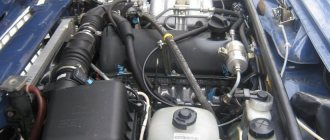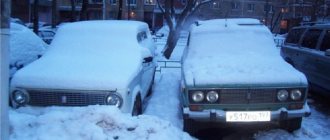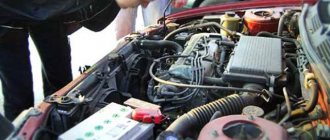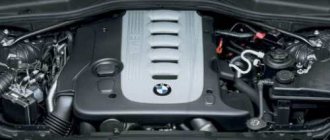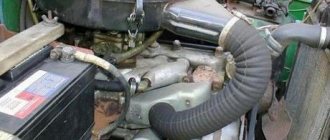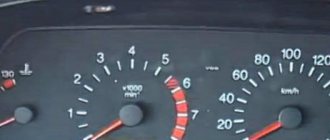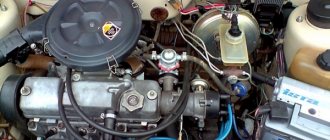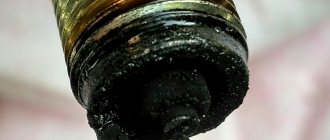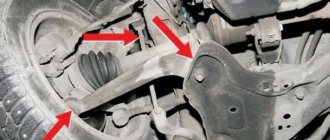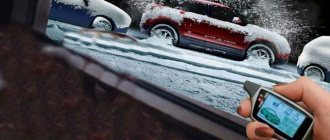Carburetor power units are actually a thing of the past. But many cars on the roads of our country still use this option for supplying fuel to the engine. For many, a carburetor turns out to be a fairly convenient means of replacing an injector, since the car becomes easier to repair and cheaper to operate. In most cases, the owner of a carburetor car can independently carry out basic maintenance work on the fuel supply system. In the case of an injector, this task should only be performed by specialists. For simple carburetor repairs, you do not need special equipment, but to work with an injector, such devices are simply necessary. Therefore, such a part of the engine power system has certain advantages. Interestingly, these advantages force many to change the injector to a carburetor, which is not difficult at all.
Problems that arise with the carburetor can be very different. One of the common problems is that the engine stops working after the car has completely warmed up. The driver has to increase the speed with the help of a choke, but this trick will not work on carburetors with auto-choke. Eventually, the engine will stall as soon as you release the gas pedal. At every traffic light, intersection and pedestrian crossing, the driver begins to curse fate, red lights and innocent pedestrians, and the carburetor continues to stall and refuses to work normally, despite very expensive gasoline. Let's figure out the nature of this trouble.
The cause of a stalled engine is the spark plugs
In 50% of cases, the problem is due to the fact that the spark plugs simply do not produce a spark. This failure occurs as a result of 3 reasons:
- contacts become clogged;
- plaque forms along the entire contour of the candle;
- malfunction when supplying voltage to the spark plug.
However, the most popular is still black carbon deposits on the spark plugs, which prevents the spark from appearing or causes it to work periodically.
Tip: if the spark plug set malfunctions, you will hear a “triple” sound that is uncharacteristic of the engine. In this case, the car will jerk strongly while moving. As a result, the engine will either stall on its own, or you will need to turn it off and turn the ignition on again.
If you see dirt on the surface of the contacts, this indicates the need to replace a low-quality type of fuel or check the serviceability of the oil supply systems. It is the oil supply adjustment sensors that can splash the spark plugs with it if there is a problem. Also, oil that appears on a set of spark plugs may indicate serious damage to components in the engine cylinders. Be sure to check the engine at a car service center. Otherwise, further operation may lead to expensive replacement of jet rods and even the entire set of pistons.
If you systematically use low-quality gasoline samples, you may find a red-brown coating on the contour of the spark plug. In this case, cleaning will not help - it is better to immediately replace the entire set after a new refill. If you find that the car periodically turns off at full speed, but starts easily even with clean spark plugs, then the problem lies in the electrical wiring.
spark plug
Other reasons why the engine stalls when hot
In addition to the above material, I would like to note a number of malfunctions that lead to a sudden stop of a hot engine while driving. The unit may stall while driving if the timing belt or chain is broken. This situation means that in most cases the power unit will require expensive repairs, since as a result of a break the valves are bent, piston defects and other damage to engine elements occur.
If the engine stalls while driving through deep puddles or other water obstacles, then there is a high probability of water getting into the cylinders or the elements of the ignition system getting wet. In the first case, water enters the combustion chambers through the air intake. Since water is incompressible, the engine is severely damaged, connecting rods bend, cracks appear in the cylinder block, etc. After a water hammer, there is usually a need to overhaul the engine. In the second case, the problem is not critical, since after removing the moisture, the functionality of the ignition system and power unit can often be restored.
Also, a car may stall when hot if there is too little fuel in the fuel tank. Quite often the engine stops when driving uphill. The fact is that during a long climb, the car is in a position for a long time when the fuel tank is tilted and the fuel level is not enough to supply through the fuel intake. It is quite obvious that in this case the engine will stall.
The cause of a stalled engine is a power supply failure
In this type of problem, 3 reasons may be involved:
- Poor contact with the terminals of the new battery;
- Detection of poor contact or breakdown along the entire length of high-voltage wires;
- The appearance of malfunctions in the generator or ignition coil system of the car.
If the problem lies in damp high-voltage wires, then it is best to replace them completely along with the battery contacts. If the terminals make poor contact, you need to carefully clean them with sandpaper and try to reconnect them. If the generator is found to be inoperable, the problem usually boils down to problems in the following parts:
- Broken timing belt;
- There is a malfunction inside the housing of the unit itself.
A problem with the generator is easily detected when the corresponding indicator on the dashboard turns on. In addition, if there is insufficient energy supply, the backlight of the on-board panel will gradually fade, and a set of other diagnostic sensors will show incorrect values.
Advice: if when you press the gas the car jerks, then stalls and cannot start, then the problem is related to the failure of the ignition coils. It is best to replace these parts in a car service using special equipment.
From the list of reasons that are directly related to the car engine, you need to move on to problems that arise in the fuel and air supply systems, as well as malfunctions of components responsible for exhaust gas removal.
Ignition coil
timing belt
Cars with gasoline engines
A gasoline engine may not start after warming up quite often, especially when operating in low temperatures. The fact is that the fuel remaining in the chamber begins to evaporate quickly due to elevated temperatures. Vapors fill all cavities, including the carburetor, manifold, and air filter. As a result, fuel levels in the float chamber decrease and gas plugs occur. The duration of this process depends on the design of the fuel system and on the external temperature conditions.
That is, the reason why a gasoline engine does not warm up after warming up lies in excessive evaporation of gasoline and the formation of an enriched fuel mixture.
Fuel supply faults
It is quite easy to find out that the car stalls while driving due to the engine being “choked” with the fuel mixture - during a long drive you will find that the signal of the sensor responsible for this function is constantly on.
Here the problem lies in low-quality fuel, which does not quickly “ignite” from the spark of the candles. It can also be caused by gasoline not meeting the requirements for the octane number specified in the vehicle specifications. If there are problems with fuel, the gas pedal will be pressed all the way, and the car will not begin to gain speed. In addition, the car will periodically stall when the clutch is engaged.
Another symptom indicating problems with fuel is the appearance of problems with the car after refueling. The problem is characterized by a rapid drop in engine power at full speed, as well as when constantly changing gears. The way out of the situation is to completely drain the bad fuel mixture, wash the engine and all the fuel system pipes.
Also, the car will constantly stall if there is an interruption in the supply of the fuel mixture. This may be due to contamination in the following system components:
- Dirt in the fuel filter;
- Problems with injector nozzles;
- Dirty throttle valves;
- Fuel pump power failure.
The main symptom of a malfunction of these parts is that there will be a gradual drop in the power of the car’s engine, after which the car will stall even after sharply pressing the gas pedal. If you do not release the clutch carefully when changing gears, this will also cause the engine to stall.
The contamination of the fuel filter and fuel pump can be judged by the unstable operation of the machine even during idling and during rapid braking (when the supply of the fuel mixture decreases). And if the performance of fuel filters can be easily established during an external inspection and eliminated by replacing them, then to detect other causes, you need a full-fledged computer diagnostics, which can only be carried out in a car service center.
Another reason for a stalled car associated with the operation of the fuel pump is boiling gasoline in the fuel pump. This happens mainly in hot weather when the car is moving slowly or standing on the highway in traffic jams. The car will start to stall while driving, but when you turn on the idle speed and press the clutch, it will start again.
If boiling occurs, it is better to stand in a traffic jam with the engine turned off and gradually cool the car. After 5-10 minutes, the car's operation will be stable again.
Advice: if you recently did a wheel alignment with your own hands on a VAZ-2107, then to cool the car, proceed as follows - throw a piece of cloth made of dense material over the fuel pump body, which you first moisten with cold water.
Why might the carburetor stall after warming up?
To understand the cause of this problem, it is best to contact motorists who have already encountered such a problem. Whatever happens to your car, remember that similar problems have most likely happened to other car owners. Therefore, you should visit specialized forums or simply chat with other motorists. In this case, you can find several options for answering your question. After warming up, the carburetor completely closes the choke valve, leaving the accelerator valve in working condition. If the idle speed is set incorrectly, the engine will only run on choke. But this is the basic reason; there are several other popular problems:
- rapid engine overheating and serious problems with the cooling system of your power unit;
- very poorly adjusted valves - adjustment has not been made for several years in a row;
- the carburetor is not adjusted, the mixture is too lean, the system blows too much air into the combustion chamber;
- the mixture can also be overly rich, which causes fuel overflow and problems in some carburetors;
- the carburetor jets are clogged, fuel flows poorly through them, which causes problems in the quality of the mixture;
- gasoline is incredibly bad, the filters are clogged, the flow rate of the fuel system has become much lower;
- Certain problems have arisen inside the carburetor, membranes and gaskets have broken, and fuel is leaking.
The latter case is especially popular on domestic cars. Due to improper operation of the fuel pump and other troubles, which may well become a problem in the functioning of the power unit, the carburetor simply stops working normally, its main functions are disrupted due to damage to internal parts. This is also one of the most difficult types of breakdowns, so you will have to invest a lot of time or money to solve this problem. Therefore, first you should check and eliminate other possible problems that could cause such troubles. In particular, you can check all the previous points, which could also cause the carburetor to perform poorly and stop functioning when hot.
Malfunctions in the air mixture supply system
Here the problem lies either in a clogged air filter or in the failure of the regulator responsible for idling the car. In this case, your car will stall all the time when you gain speed or when you release the gas when you release the accelerator.
To solve the problem, remove and inspect the air filter. If there is serious contamination or chips, replace it. To diagnose and replace the idle speed regulator, you will need the help of qualified car service employees.
Cold engine won't start
As a rule, such a nuisance occurs in winter, when you absolutely do not expect any trouble from your car.
The most common reason is the battery. Many car owners know that batteries cannot be repaired and their service life is limited, but it is unlikely that anyone will think about this until the used battery makes itself felt. Most often this happens in cold weather.
But there may be other reasons why the engine does not start when cold:
- the fuel pump has worn out and for this reason is not able to create the required pressure in the fuel system to start the engine when cold;
- the air mixture purification filter is so dirty that it does not allow the required volume of air to pass through;
- low quality fuel, which can clog the vehicle's fuel system. You should not pour everything into the tank;
- the cause may be a carburetor whose throttle valve has stopped working correctly or the idle speed valve has failed;
- engine overcooling in frosty weather.
In order to ensure free engine starting in cold weather, experts recommend adhering to the following rules:
- maintain all electrical circuits in good condition;
- the battery must be in good working order, charged, and have adequate power;
- refuel with season-appropriate fuel at trusted gas stations that have fuel quality certificates;
- there must always be a certain level of fuel in the tank;
- the ideal option is to keep the car in a warm garage;
- the engine must have the “correct” oil for the season;
- there should be a cable in the trunk of the car, it is advisable to have cables for starting the engine from the donor battery, so that at the right time you can “get a cigarette from your neighbor”;
- equip the car with an autostart system.
Article on the topic: Car tuning: types of airbrushing
Car exhaust system problem
The engine may also stall if the tubes responsible for removing gases are malfunctioning. At full speed, the car will quickly begin to “choke”, and pressing the gas pedal completely stops the engine. Malfunctions in the operation of the exhaust pipe system in 90% of cases are caused by contamination and clogging of the muffler. However, the catalyst may also fail.
In the first case, carefully clean the muffler and remove foreign objects from there. If there are problems with the catalyst, conduct a complete diagnosis of the exhaust system and replace this element.
car muffler
How to diagnose a stalled engine?
If on relatively old cars with a carburetor engine identifying problems and diagnosing them was not particularly difficult, then on modern power units it is necessary to perform expensive computer diagnostics. At the same time, after performing such an inspection of the power unit, you can be sure of the nature of the breakdown, which will be the key to its quick elimination.
In some cases, to restore equipment, it is necessary to hide the engine and carry out a major overhaul. In this case, the cost of such an engine restoration will be quite high, so try not to cause serious damage, and at the first symptoms of problems with the engine, immediately contact specialized service stations, whose technicians will perform the necessary diagnostics, which will allow the car owner to repair the engine at minimal cost and various attachments.
What to do if cars with automatic transmission stall?
If your vehicle has an automatic transmission, then the problem should be found in the electrical supply. If you abruptly switch from one gear to another, or while switching gears while braking, the settings may be distorted, and the on-board computer will receive a signal to turn off the engine.
Also, models with automatic transmission may stall due to malfunctions of the hydrodynamic transformers of the gearbox. This problem mainly manifests itself during acceleration and requires urgent intervention from car service specialists.
Diagnosis of IAC
How can you diagnose a faulty idle air control valve?:
- You stopped for 5 minutes after a long trip, naturally the engine is hot. After this, you try to start the engine, but the engine does not start or starts and immediately stalls. Even if the engine starts, the normal idle speed is not set immediately, but only after pressing the gas pedal more than once.
- The same situation can occur on a cold engine. The first time the engine starts and immediately stalls, but the second time it runs fine.
- Whatever the engine, hot or cold, it starts only when the gas pedal is depressed.
- The situation is the same as in point 3, but the accelerator pedal must be held constantly until the engine warms up or the car starts moving.
- You braked sharply and the car suddenly stalled; when you restart, the idle speed remains within normal limits.
- The idle speed hangs in an inflated range from 1500 to 2000 revolutions and only after revving it returns to normal values. Therefore, if your car’s engine starts and immediately stalls, try immediately flushing the throttle assembly and idle air control. If this doesn't help, just replace the IAC and that's it.
What does IAC look like?
